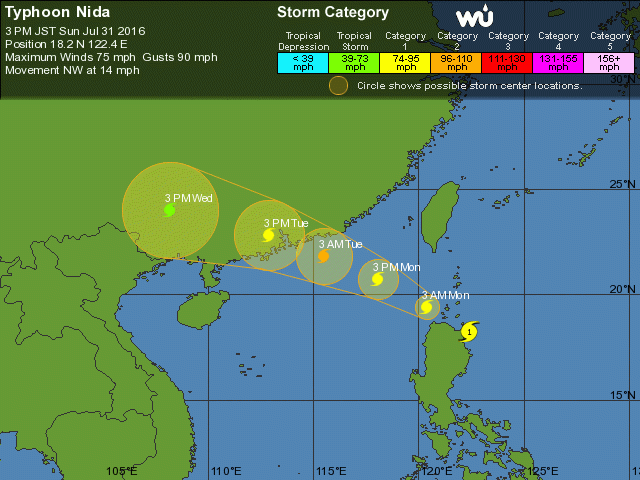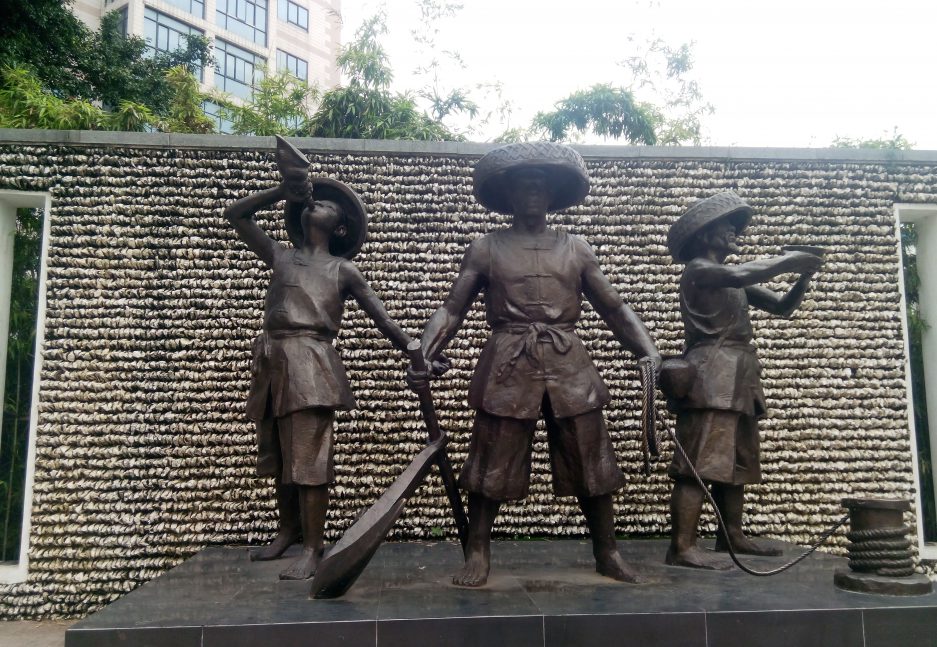
Xixiang underground train station, Shenzhen. Closed to the public as it prepares for the arrival of Typhoon Nida, but welcoming to sandbags.
When I heard news of yet another potential storm initially I wasn’t too worried.
Typhoons are common in this region at this time of year. However, reading reports of expected windspeeds of 95-130mph got my attention as it became apparent that Typhoon Nida was demanding nothing less than total respect.
She was expected to reach South East China’s coastal Guangdong province shortly after travelling actoss the South China sea near the Philippines. As well as battering my city, Shenzhen, she’d also affect neighbouring cities including the area capital, Guangzhou and off the mainland, the sparkling, overcrowded metropolis of Hong Kong.

Warnings about safety along with tips on how to secure property and belongings were plentiful. TV news broadcasters promised to stay on the air all night bringing us updates every half an hour.
When I caught myself thinking about how to locate underground shelters I wondered if the media really were there to help or simply to induce panic.

Shenzhen’s newest underground rail station, Line 11. Commuters crush forward in an effort to get home before the storm. The good news is that authorities have recently announced they’ll be adding extra trains to this line.

8pm. A deserted Futian underground train station.
The daytime storm force warning given by Hong Kong Observatory hovered at a fairly safe 3 before swiftly rising to an ominous 8 between 9 and 10pm. By then the streets were eerily quiet, emptied of China’s relentless traffic.
The many building sites, some of which begin work at 7am and continue until almost 11pm on a daily basis, were silent. The labourers had returned to their dormitories, probably wondering if the pre-fabricated material used to build the temporary workers accommodation would resist the storm.
Shops which normally remained open until 9 or 10pm closed several hours early. Doting grandparents had taken their grandchildren inside instead of spending time in the outdoor communal play areas according to their usual early evening routine.
Everybody was at home. Acting in concert we watched the skies from behind closed doors and tightly shuttered windows, one ear on the news, thinking of nothing but the storm to come.
We were advised to tape up large areas of glass and to remove loose objects such as plants and furniture from balconies. Ironically there was no official word on what to do about homeless people and animals but I’ve heard about shelters opening during cold weather and I prayed that these places of refuge would not be redundant in the storm.

I live in a sturdy, newly built building and my landlord assured me I’d be safe, but being on the 34th floor with only a mezzanine roof above me and a clear passsage to the sea didn’t seem like the best idea, especially when a news cutting I’d taped to the back of my door flew off and eerily bounced across the floor several times courtesy of the wind picking up outside.

Playing ground of Shekou High School in Shenzhen the morning after Typhoon Nida. Many of its beautiful trees suffered severe storm damage.
The worst of the storm hit overnight with winds of between 96-110mph, ear shattering thunderstorms and piercing lightening. Temperatures dropped so suddenly and to such an extent that in the midst of a tropical summer I was forced to don a thick jumper to keep warm. (for my American readers, jumper = sweater).
Following the storm, today’s social media has been filled with videos of flash flooding affecting cars, small buildings and even people, although I haven’t yet heard reports of any loss of life. Long standing trees have been split in half or had previously sturdy limbs ripped away. The sea level has risen by one and a half metres and copious amounts of rain drenched the area. In addition most businesses and schools were closed for the duration.
All in all, the true and final cost of the storm is yet to be ascertained.
Tropical Cyclone Nida thundered into my town and left her mark, weakening as she moves through Guangdong and Guanxi. But typhoon season is not yet over and who knows what further damage the next one will bring?


Some of the gorgeous trees around Shenzhen which suffered severe storm damage courtesy of Typhoon Nida.


